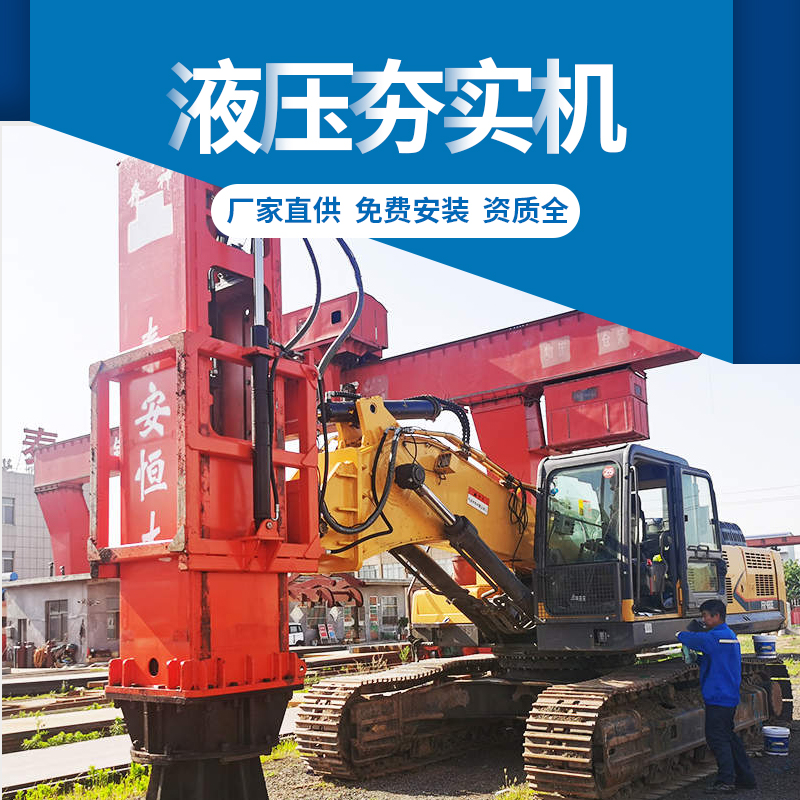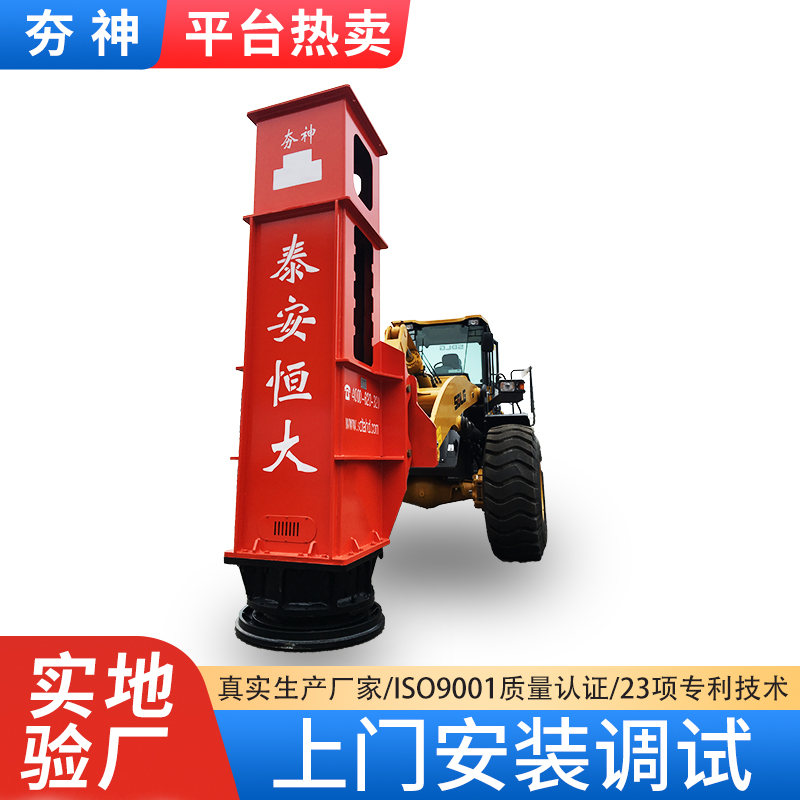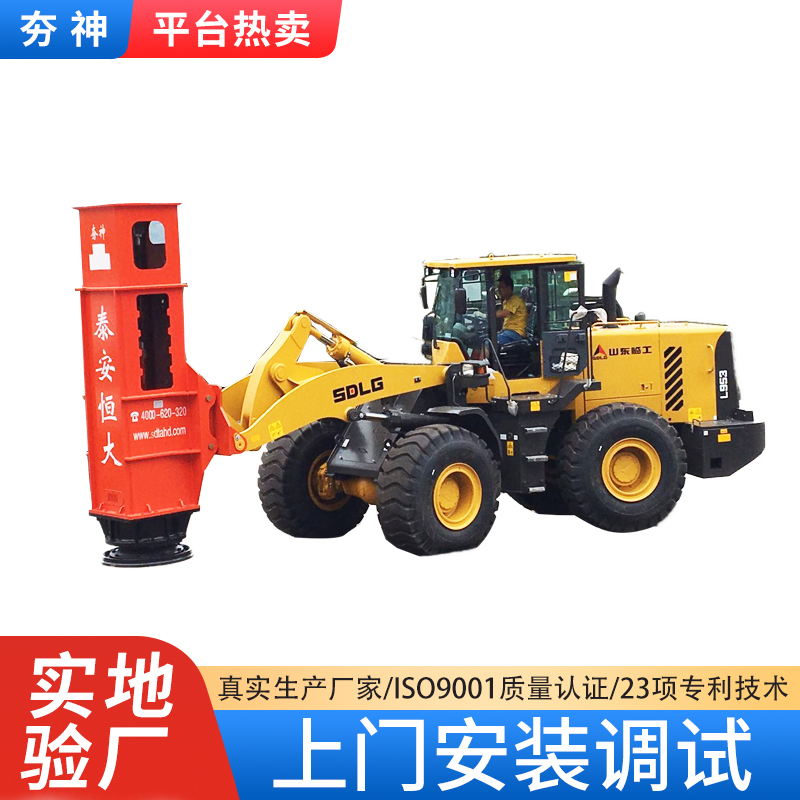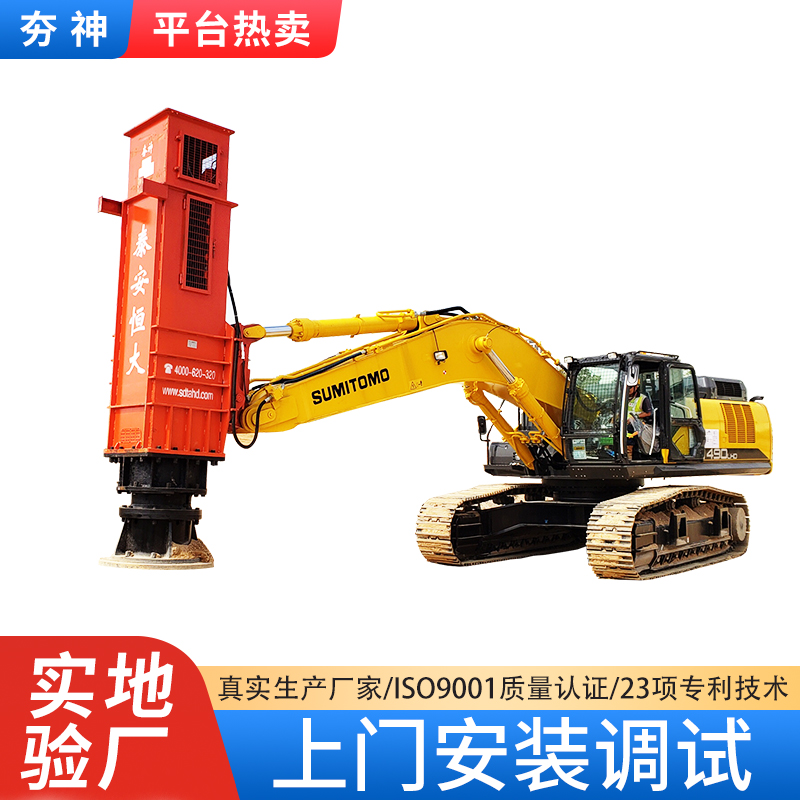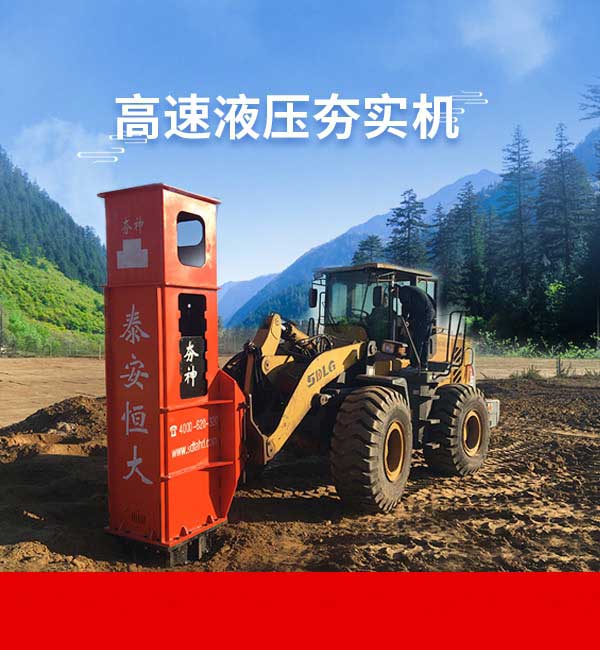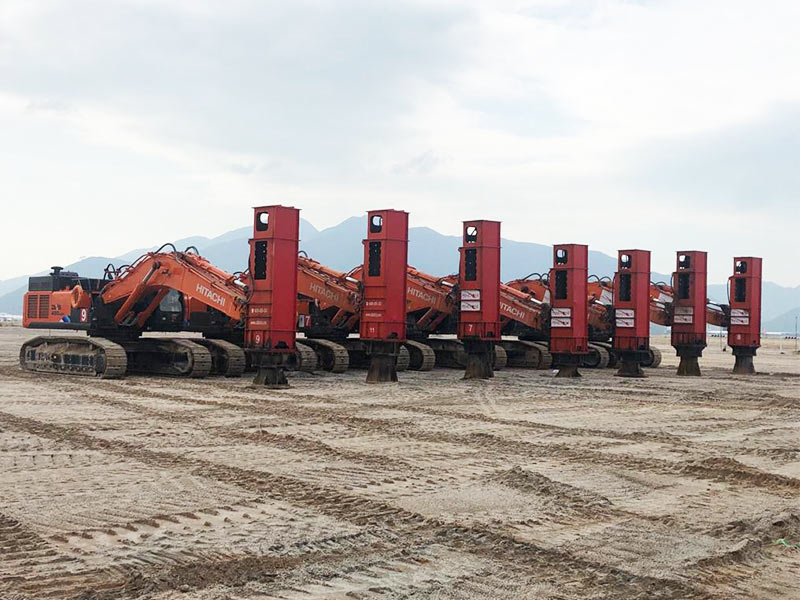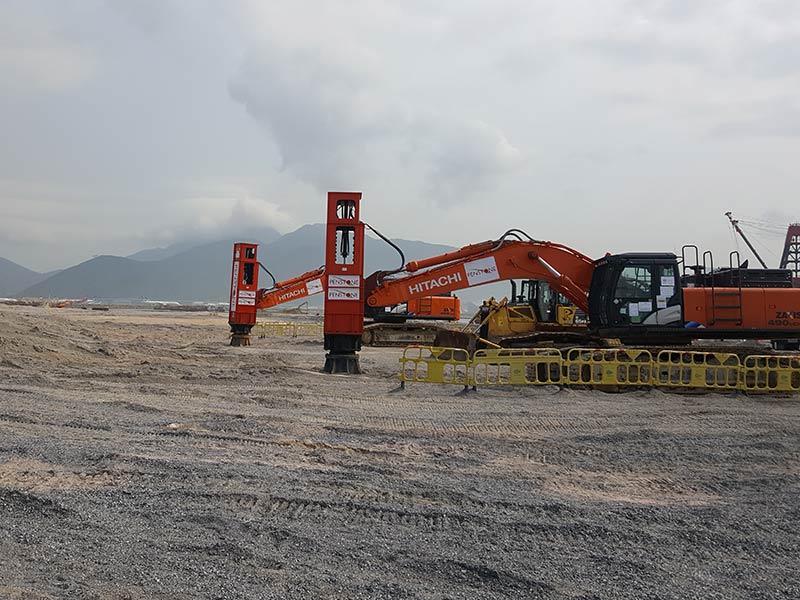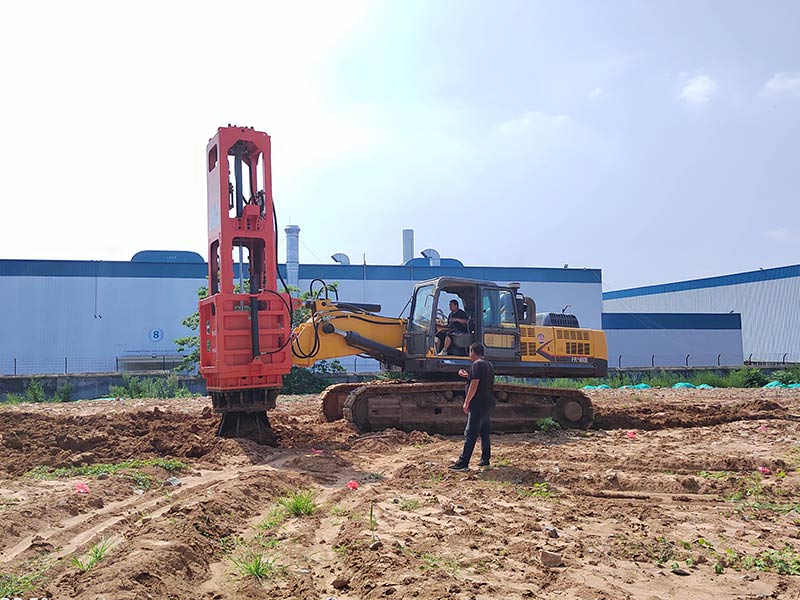The Rapid Impact Compaction for the soil improvement uses a hydraulic hammer mounted on an excavator. The hammer with a weight ranging from 5 up to 12 tons is dropped freely from a height of 1.2 m on a large circular foot. Impacts repeated at a rate ranging from 40 up to 60 blows per minute plunge the steel foot creating a crater.
The control system installed in the operator's cab allows for controlling the compaction process and recording the parameters such as impact energy or foot penetration. It can also be used to change the height from which the hammer is dropped.
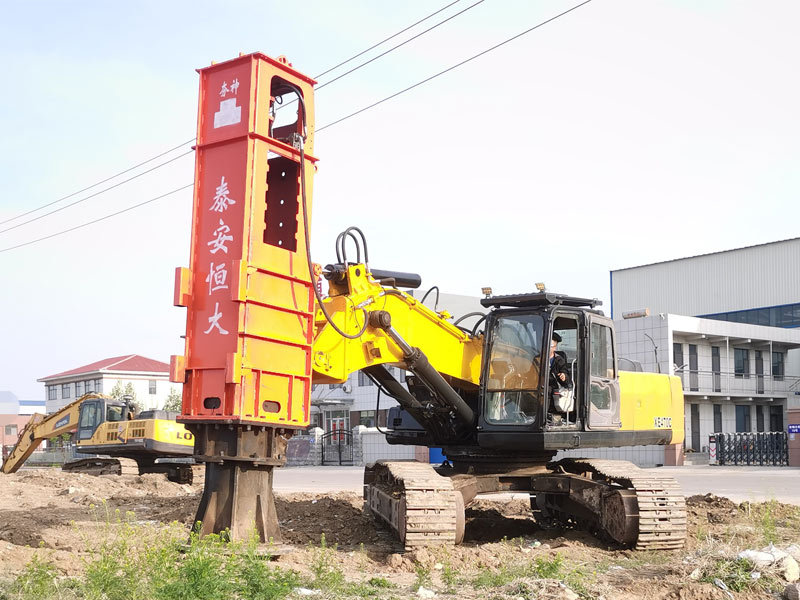
The compaction in the RIC technology is usually preceded by creating a test plot where the compaction is performed for various spacing and rates of blows. Then, the local compaction of the improved soil is tested and the optimal grid spacing and the number of blows per one point is determined. Depending on the soils, the number of blows varies between 10 and 40 per one point.

The main types of compaction equipment within our coverage are:
Rapid impact compaction (RIC)
Vibrating plates
Pedestrian rollers
Trench compactors
Tandem rollers
Self-propelled rollers
Pneumatic-tyred rollers (PTRs)
Combination rollers
Towed rollers
Static rollers
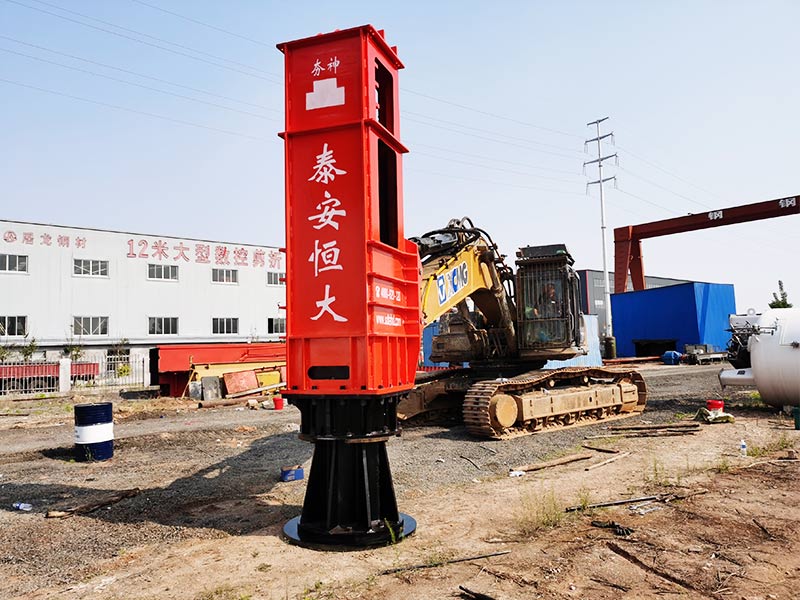
The Rapid Impact Compaction technology works very well for all kinds of non-cohesive soils, especially for the compaction of gravels and sands. It can also be used on reclaimed areas where anthropogenic soils and uncompacted fills occur.
Most often, the RIC technology is used for the construction of enclosed buildings: under the foundation slabs/floors of industrial and commercial halls and under heavy surfaces of warehouses, tanks; for the construction of infrastructure: all types of roads and highways, under the road and rail embankments and often as the improvement of the base for parking lots and airport runways. A great advantage of the RIC method is its mobility and relatively small size of the equipment unit which allows for carrying out the works in areas with difficult access.
Depending on the soil type, water conditions and parameters of the hammer the soil compaction range reaches a depth between 4.0 and 5.0 m.
A safe working distance from the existing buildings, for which vibration monitoring is not necessary, amounts to approximately 5.0 up to 6.0 m. Than, the generated noise is within 90 dBA.
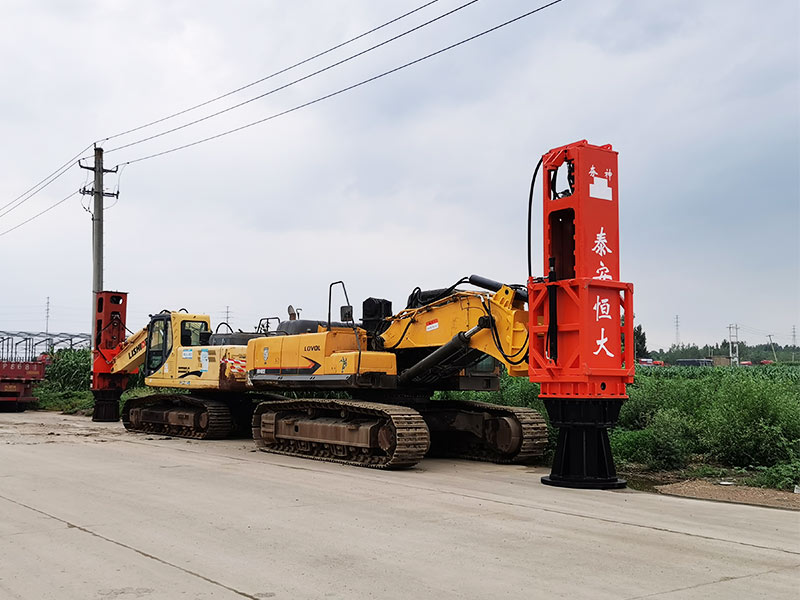
Rapid Impact Compaction is a shallow ground improvement and densification technique. This method densifies shallow, granular soils, which repeatedly strike an impact plate on the ground surface using a hydraulic hammer. The energy is transferred to the underlying loose soils and regroups the particles into a denser formation. The impact locations are located on a grid pattern and the spacing of those locations is calculated by the subsurface conditions and foundation loading and geometry.
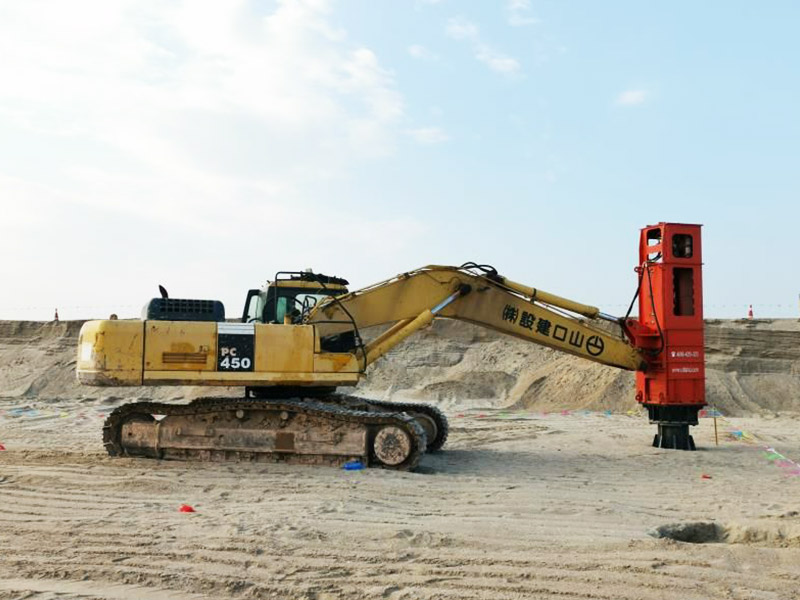
RIC technique is performed at the surface of a terrain and it comprises of a heavy excavator which is equipped with a specially designed arm onto which the hammer is attached. Within the hammer, a 5 to 10 drop weight is hydraulically lifted till a required height after which the weight is dropped using a hydraulic acceleration. This whole process of lifting and dropping of the weight takes place with a frequency of 30 to 80 times a minute.
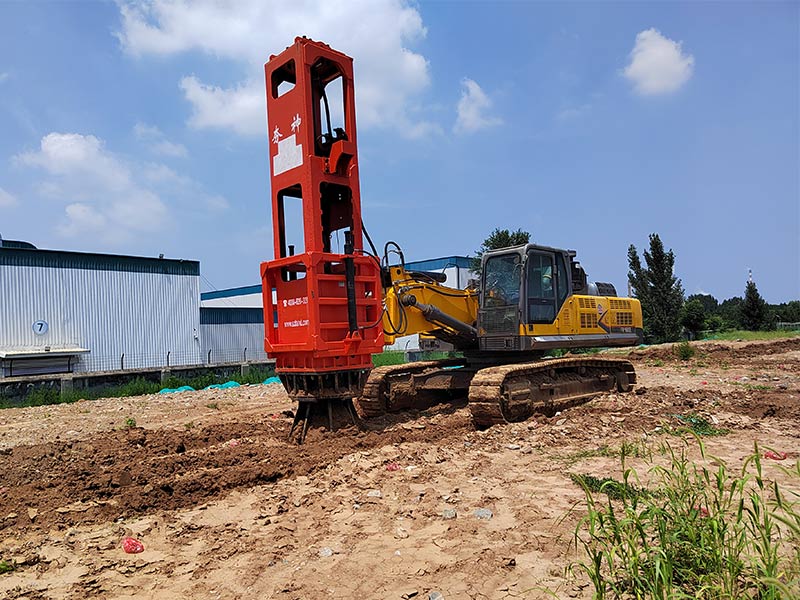
During the compaction of a location, the foot remains into contact with the soil. The impact of the hammer on to the foot initiates the compaction process. The movement of the foot into the ground, the heavy weight of the equipment and high energy transfer is also causing densification. The dense compaction grid ensures that a homogeneous compaction is reached throughout the area. This is caused because the impact locations are also affected by the compaction of nearby points which results in improving the overall performance.

 Current Position:
Current Position: 